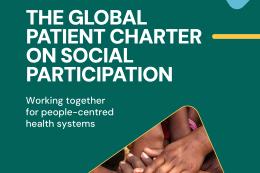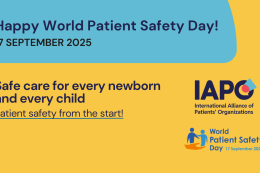World Health Statistics 2019 disaggregated by sex for the first time

For the first time, the report has disaggregated its data by sex. This angle has highlighted some critical sex and gender differences that affect health outcomes which further highlight the importance of those differences in the attainment of the SDGs. The report recommends that the roles of sex and gender be systematically taken into account when collecting data, analysing health situations, formulating policies and designing health programs.
Definitions of sex and gender
| Sex | Gender |
| -Sex refers to the biological characteristics that define humans as female or male. These sets of biological characteristics are not mutually exclusive, because there are individuals who are born with physical or biological sex characteristics who do not fit the traditional definitions of female or male (intersex). |
-Gender refers to the socially constructed norms, roles and relations of and among women, men, boys and girls. Gender also refers to expressions and identities of women, men, boys, girls and gender-diverse people. Gender is inextricable from other social and structural determinants shaping health and equity and can vary across time and place. |
| -Sex differences can be observed at the level of chromosomes, gene expression, hormones, immune system and anatomy (e.g. body size, and sexual and reproductive anatomy). |
-Gender differences and inequalities influence exposure to risk factors, health-seeking and risk-taking behaviours, access to and use of health information, and promotive, preventive, curative, rehabilitative and palliative health services, experience with health care, including in terms of access to and control over resources and power relations |
|
Examples of sex-specific conditions:
|
Examples of gender-related factors resulting in differential health outcomes:
|
Findings:
This report highlighted some important findings, even though more work is needed for a better understanding of the factors influencing risk behaviours, access to services and health outcomes. The largest disparities in life expectancy – and values of SDG indicators – occur when comparing country groupings such as World Bank income groups. Nevertheless, failure to address these differences will allow inequities to persist and could jeopardize the attainment of the SDGs.
Some key areas to address are as follows:
- Under-5 mortality rates are generally higher in boys than girls owing to a greater biological frailty in boys. However, in some populations rates are similar or equal between boys and girls, which is indicative of avoidable mortality among female children.
- In low-income countries, maternal deaths contribute more than any other single cause to differences in life expectancy between men and women. Such deaths rarely occur in upper-middle- and high-income countries. Cervical cancer is also concentrated in low- and lower-middle-income countries.
- Men have a lower life expectancy than women, owing to higher death rates in men from multiple causes, especially cardiovascular diseases, road injuries, lung cancers, COPD and stroke.
- Men have greater exposure to some risk factors for NCDs, such as tobacco use and alcohol consumption.
- In many settings, men use health services less than women, even after taking into account reproductive related consultations. For some infectious diseases, such as HIV and TB, men’s later diagnosis and treatment is responsible for a greater number of secondary infections.
- Women are the major contributors to the delivery of health services, but are more likely to be in caring roles (often unpaid) and less likely to be employed as doctors or managers.
- Both men and women could benefit from more specific targeting of behavioural and legislative interventions to their needs, to reduce exposure to harmful practices and mitigate their consequences.
- For some conditions, particularly in low-income countries, premature deaths can be averted by improving use of basic preventive and curative health services. For example, maternal deaths can be reduced by ensuring that women have access to high-quality care before, during and after childbirth, and access to modern methods of contraception.
- It may also be necessary to address norms in which men’s health seeking is seen as a sign of weakness, and to consider differences in how diseases manifest and present in women and men, to improve the quality of diagnosis and treatment.
- There is often scope to increase the supply of health services, but it may also be necessary to address barriers to using those services; for example, gender-related barriers that prevent women from accessing maternal health services and making autonomous reproductive decisions.
- While mortality and morbidity rates can be reduced through health care, the health of populations can also be improved by reducing exposure to risk factors such as unsafe water and sanitation, air pollution, violence, tobacco use and alcohol consumption.
Sex disaggregation of global values of SDG indicators is currently possible in just 11 of the 28 indicators where it may be of interest. Gaps in data must be addressed, because they compromise efforts to accurately monitor changes in health status and progress towards SDGs.
Some key actions are suggested based on the findings of this report:
1. Develop policies and programmes that take into account sex-based factors and are responsive to gender
Health planning should take into account differences between women and men in exposure to risk factors, access to services and differences in health outcomes, and should be prepared to target actions to areas where sex or gender differences contribute most to health outcomes. Gender analysis should consider women, men and transgender population groups to ensure equitable health outcomes.
2. Invest in data systems for health, including disaggregated dataThe development of policies and programmes to address inequities in health requires better information on differences and inequalities between men and women, and other dimensions of inequity such as socioeconomic status and place of residence. This may require modifications to the way routine information systems and health facility or household surveys are implemented, and the way that data are reported and analysed. It will also need strengthening of civil vital registration systems. Data beyond health outcomes including qualitative data are also needed to identify gender as well as other socioeconomic inequalities that lead to poor health outcomes.
3. Build responsive institutionsTo enable decent conditions of work for all and responsive health systems, it is necessary to formulate gender responsive human resource policies, ensure equal pay for work of equal value, and address barriers faced by women such as mobility restrictions and lack of education and career advancement opportunities. There is also a need for increased leadership roles for women.
4. Address upstream influences on health status and use of health servicesMany of the factors that influence health and use of health services are beyond the traditional remit of ministries of health. Multisectoral approaches are needed that address underlying factors, such as gender and socioeconomic inequalities. Nonetheless, the health sector has a key role in raising awareness of these issues, and can catalyse the development of gender-sensitive and gender-responsive policies and programmes.
5. Consider sex and gender differences and how they result in both female and male disadvantageIn many circumstances, women and men experience poorer health outcomes for different reasons. Although some of these poorer health outcomes may have a biological basis, they may be amplified by gender roles. Health policies and programmes need to be responsive to the needs of both men and women.
Related Information:



